We would like to take this opportunity to explain how the water main system works in our municipality and why we can still have the occurrence of water bans, despite our best efforts to ensure a steady and reliable water supply.
Our wells provide 2080 cubic meters per day. Low water levels in our wells can occur and result in water bans.
The water system of the City of Clarence-Rockland extends south, from the Cheney water tower to the Limoges distribution system. As we are still in Phase 1 of the project, we can only take 350 cubic metres more from Clarence-Rockland. That being said, the water remains limited. The potential for water bans still exists as any restrictions that Clarence-Rockland has on their system will also affect Limoges.
We understand that water bans can be frustrating and inconvenient, which is why we ask residents to be mindful of their water consumption at the moment. To try to prevent a situation in which a full water ban is mandatory, the municipality put into place By Law no.53-2021 that includes a schedule for water usage.
Monday, Wednesday, Friday from 7 p.m. to 10 p.m. for even addresses.
Tuesday, Thursday, Saturday from 7 p.m. to 10 p.m. for odd addresses.
No outdoor water use is permitted on Sundays.
We look forward to completing the next phases of the water system project, which will increase our water supply and reduce the likelihood of water bans. If you have any questions or concerns regarding the water system, please do not hesitate to contact us at 613-443-1425 ext.303.
This project will ensure that the water system of the City of Clarence-Rockland will extend south, from the Cheney water tower to the Limoges distribution system, located in The Nation Municipality.
FEBRUARY 8th, 2022 – At the Monday February 7th, 2022 meeting, Doug Renaud, Director of Water and Wastewater at The Nation Municipality provided members of Council with an update on the water main connecting Cheney and Limoges. Please consult this Water main Update for details.
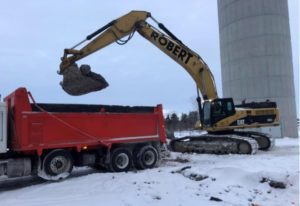
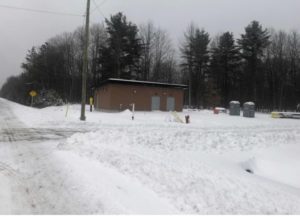
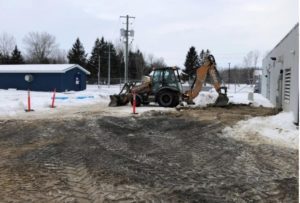
AUGUST 4TH 2021 – The Nation Municipality and the City of Clarence Rockland will be constructing a new water transmission main from the elevated tower in Cheney to the water treatment plant in Limoges. Please consult the Construction Notice for details. Thank you.
AUGUST 26TH 2020 – Historic Agreement. The Municipalities of Clarence-Rockland and The Nation are going ahead with the drinking water distribution project. Please click here for details.
SEPTEMBER 10TH 2021 – PROJECT UPDATE – New Water Main in Limoges. We are excited to share with you this project update: the first length of the new water main that will bring water from Cheney (Clarence-Rockland) to Limoges has been installed along Indian Creek Road! Follow us for more updates.
OCTOBER 5TH, 2021 – Work is going well on the new water pipe between Cheney and Limoges. The project consists of installing approximately 10 km of water pipe between the Cheney water tower, along Indian Creek Road, and the existing Nation water treatment plant, on Limoges road, in Limoges. . Construction began in September 2021 and is expected to be completed in spring 2022. Costs are estimated at $ 10 million.
DECEMBER 17TH, 2021 : The new watermain connecting the Cheney water tower to the Limoges distribution system is now installed. Please consult the press release.
JANUARY 11th, 2022 – In April 2022, the new water main connecting Rockland to Limoges will be operational. This document answers a few questions that some residents may have.
The official inauguration of the new water main linking the Cheney water tower to the village of Limoges was held June 28th, 2022. Please consult this Press Release for further details.
We would like to take this opportunity to explain how the water main system works in our municipality and why we can still have the occurrence of water bans, despite our best efforts to ensure a steady and reliable water supply.
Our wells provide 2080 cubic meters per day. Low water levels in our wells can occur and result in water bans.
The water system of the City of Clarence-Rockland extends south, from the Cheney water tower to the Limoges distribution system. As we are still in Phase 1 of the project, we can only take 350 cubic metres more from Clarence-Rockland. That being said, the water remains limited. The potential for water bans still exists as any restrictions that Clarence-Rockland has on their system will also affect Limoges.
We understand that water bans can be frustrating and inconvenient, which is why we ask residents to be mindful of their water consumption at the moment. To try to prevent a situation in which a full water ban is mandatory, the municipality put into place By Law no.53-2021 that includes a schedule for water usage.
Monday, Wednesday, Friday from 7 p.m. to 10 p.m. for even addresses.
Tuesday, Thursday, Saturday from 7 p.m. to 10 p.m. for odd addresses.
No outdoor water use is permitted on Sundays.
We look forward to completing the next phases of the water system project, which will increase our water supply and reduce the likelihood of water bans. If you have any questions or concerns regarding the water system, please do not hesitate to contact us at 613-443-1425 ext.303.
This project will ensure that the water system of the City of Clarence-Rockland will extend south, from the Cheney water tower to the Limoges distribution system, located in The Nation Municipality.
FEBRUARY 8th, 2022 – At the Monday February 7th, 2022 meeting, Doug Renaud, Director of Water and Wastewater at The Nation Municipality provided members of Council with an update on the water main connecting Cheney and Limoges. Please consult this Water main Update for details.
AUGUST 4TH 2021 – The Nation Municipality and the City of Clarence Rockland will be constructing a new water transmission main from the elevated tower in Cheney to the water treatment plant in Limoges. Please consult the Construction Notice for details. Thank you.
AUGUST 26TH 2020 – Historic Agreement. The Municipalities of Clarence-Rockland and The Nation are going ahead with the drinking water distribution project. Please click here for details.
SEPTEMBER 10TH 2021 – PROJECT UPDATE – New Water Main in Limoges. We are excited to share with you this project update: the first length of the new water main that will bring water from Cheney (Clarence-Rockland) to Limoges has been installed along Indian Creek Road! Follow us for more updates.
OCTOBER 5TH, 2021 – Work is going well on the new water pipe between Cheney and Limoges. The project consists of installing approximately 10 km of water pipe between the Cheney water tower, along Indian Creek Road, and the existing Nation water treatment plant, on Limoges road, in Limoges. . Construction began in September 2021 and is expected to be completed in spring 2022. Costs are estimated at $ 10 million.
DECEMBER 17TH, 2021 : The new watermain connecting the Cheney water tower to the Limoges distribution system is now installed. Please consult the press release.
JANUARY 11th, 2022 – In April 2022, the new water main connecting Rockland to Limoges will be operational. This document answers a few questions that some residents may have.



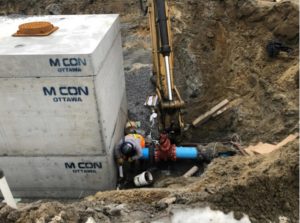
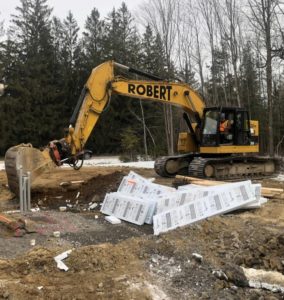
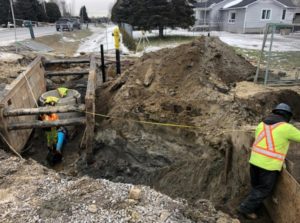
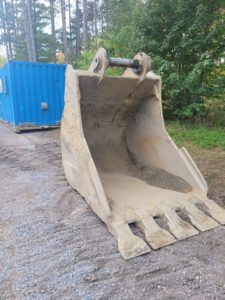
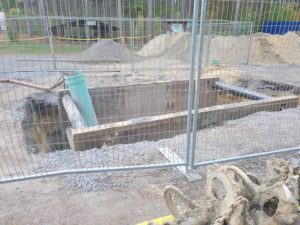
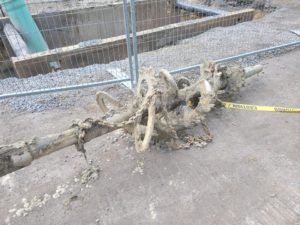
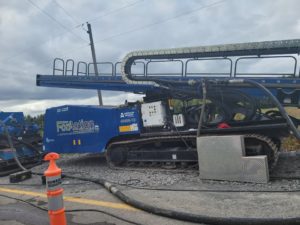
The Nation Municipality operates two water systems.
Frequently asked questions on the water main.
1- Will the Municipality still be drawing water from the existing groundwater wells?
Yes the existing groundwater wells will still be providing water to Limoges and blended together with the new water from Rockland at the Limoges water plant.
2- Does the water coming from Rockland need to be re-treated?
No the water is already treated from the Rockland water treatment plant.
3- Where is the water source for Rockland?
The Ottawa River is the water source for Rockland.
4- Will the water quality improve with the mixing of well water and Rockland water?
In the short term 1-3 years there will not be a very noticeable change in water quality. As more development occurs in Limoges and the demand increases, we will receive more water from Rockland than what our wells produce. At this point we will see a change in quality, mainly the hardness will decrease.
5- How many phases are there to the new water system?
There is currently four phases to the upgrading of the new water system to provide additional supply based on the demand of future development in both water systems.
6- What does the first phase provide for Limoges?
The new installed water main and first phase of this joint system provides 350m3 of water per day to Limoges. That is an equivalent of 350 new homes.
7- Will there still be water bans?
Yes the potential for water bans still exist as any restrictions that Rockland has on their system will also affect Limoges. As we are still operating our wells with the new system, low water levels could still create water bans.
8- Will residents be able to water lawns any day from now on?
No, there is no change to the current water use By-Law 53-2021
9- When will the water from Rockland be online?
April 2022
10- Who will pay for the new water main?
All new water units purchased through new development will pay for the new water system.
The Nation Municipality operates two water systems.
Frequently asked questions on the water main.
1- Will the Municipality still be drawing water from the existing groundwater wells?
Yes the existing groundwater wells will still be providing water to Limoges and blended together with the new water from Rockland at the Limoges water plant.
2- Does the water coming from Rockland need to be re-treated?
No the water is already treated from the Rockland water treatment plant.
3- Where is the water source for Rockland?
The Ottawa River is the water source for Rockland.
4- Will the water quality improve with the mixing of well water and Rockland water?
In the short term 1-3 years there will not be a very noticeable change in water quality. As more development occurs in Limoges and the demand increases, we will receive more water from Rockland than what our wells produce. At this point we will see a change in quality, mainly the hardness will decrease.
5- How many phases are there to the new water system?
There is currently four phases to the upgrading of the new water system to provide additional supply based on the demand of future development in both water systems.
6- What does the first phase provide for Limoges?
The new installed water main and first phase of this joint system provides 350m3 of water per day to Limoges. That is an equivalent of 350 new homes.
7- Will there still be water bans?
Yes the potential for water bans still exist as any restrictions that Rockland has on their system will also affect Limoges. As we are still operating our wells with the new system, low water levels could still create water bans.
8- Will residents be able to water lawns any day from now on?
No, there is no change to the current water use By-Law 53-2021
9- When will the water from Rockland be online?
April 2022
10- Who will pay for the new water main?
All new water units purchased through new development will pay for the new water system.
The Nation Municipality operates two water systems.
The Nation Municipality operates two water systems.
Accessible versions available upon request.
Drinking Water Quality Management System
(Most recent version: September 30th, 2023)
Drinking Water Quality Management System
(March 30th, 2023)
Drinking Water Quality Management System
(October 26th, 2022)
2020 Drinking Water System Financial Plan
Well Water Testing Factsheet by the Eastern Ontario Health Unit
_________________________________________________
Limoges Water System
Potable Water and Wastewater Master Plan Village of Limoges
Water and Wastewater Infrastructure Master Plan – Village of Limoges
Water Meter Installation Program
By-law 53-2021 – to enact rules and regulations for the installation, repair, maintenance and access to water meters and related appurtenances, including penalties and offences.
613-443-2195
For Emergencies ONLY: 1-800-342-6442
The Nation Municipality operates two water systems.
How to read your water meter
Your home may be equipped with one of two models of water meters: a rotating dial meter or a digital water meter. To view the numbers on the digital water meter, a direct light is required to activate the digital screen. With the use of a flashlight pointed directly on the screen, the screen will be activated and display the numbers of your current water consumption along with the instant flow going through the meter.
Q. I cannot see the numbers on my water meter. What should I do?
A. Point a flashlight on the meter and the numbers will appear.
Q. What should I do if there is a previous balance on my bill but I was not the owner at that time?
A. Consult your solicitor to verify if any adjustments were done.
Q. What should I do if I have difficulty with the mail and I’m not receiving my bills?
A. We have no control over Canada Post. Register on our website to receive your bills by email (e-billing).
Q. I have not received my invoice, can you credit the penalty?
A. No, you are responsible for keeping your account up to date. This is why the bills are always payable on the last business day of the month of January, April, July and October.
Q. How can I pay my bill?
A. -At one of our offices (Casselman or Fournier): cash, cheque or Debit;
-Pre-authorized electronic payments (no additional charge);
-On line through your financial institution;
-Credit card (e-payment) (on our website only with additional fees of 3%+$0.35 per transaction);
-After business hours, deposit your cheque in the drop box outside the office;
-Register with your financial institution to make payments at ATMs.
Q. I have a sticker on my bill that says that I have a water leak. What does it mean?
A. This is a courtesy message. It was possibly caused by a running tap or a toilet trap that was not closed tightly for a few hours. Do a house test: read your meter, wait 15 minutes, and read your meter again.
Q. There is a sticker on my bill that indicates “defective meter”. How do you know?
A. We mark the meter as defective if our machine does not register a signal when we read the meter. Often, this is caused by a dead battery. The technician must change it. Please schedule an appointment.
Q. How does the municipality estimate my consumption when my meter is defective?
A. It is estimated according to the last 4 to 6 readings. 3 to 4 weeks after installation, we will return to re-read the meter to make adjustments for the next billing.
Q. How do I make a change of address?
A. Send an email to: utility@nationmun.ca.
Q. I want my tenant to pay the utility bills. How do I make the change?
A. No problem! Send us an email at utility@nationmun.ca, we will add his name to the account and the tenant will receive a copy of the bills. Please note, however, that the owner remains responsible for the account if the tenant does not pay.
Q. Is there a fee to open or close a utility account?
A. When we issue a final bill, there is a fee of $45.00 charged to the seller.
Q. I will be on vacation and will not be back on time for the next utility bill. What should I do?
A. You can register on our web site to receive your utility bills by email (E-Billing) or you can register for the preauthorized electronic payment program (no additional fees).
Q. Can you add the name of my partner on the utility bill?
A. There is only one field for the name, however, if you both have the same last name it is possible.
www.NationMun.ca
958, route 500 Ouest / West,
Casselman ON
K0A 1M0
T 613.764.5444 F 613.764.3310
Q. How can I read by water meter?
A. Point a flashlight on top of the meter and the numbers will appear.
Q. What happens if I do not pay the entirety of my bill?
A. The first day of each month we will add an interest fee of 1.25 % to the outstanding balance. The outstanding balance as of January 31st of each year will be added to your interim tax bill plus a $ 36.00 fee per service.
Q. What happens if my payment comes back as NSF (non-sufficient funds)?
A. A $ 20.00 fee will be added to your account plus interest fees, if applicable.
Q. What are the fees listed on my utility bill and what are they for?
A.
| Fees | Description | What are these fees for? |
| Eau/Water Cons | Your water consumption in square metres; | For water treatment; |
| Eau/Water Service | Set rate to be hooked up to municipal water services; | For the maintenance of pumping stations and water hydrants, and for the distribution; |
| Eau/Water Capital | Set rate for the infrastructure; | For the maintenance of the future infrastructure; |
| Égout/Sewer | Set rate to be hooked up to the municipal sewer system; | For the maintenance and treatment of the lagoons and for the community septic fields; |
Q. How can I reduce my water consumption?
A. Here are some easy ways to reduce water consumption: shut off the water tap while brushing your teeth or install a water barrel to collect rain water to water your garden or flowers.
Q. What happens if Canada Post goes on strike?
A. You are responsible to keep your account in good standing despite any interruptions to the postal service. To avoid accumulating interest fees, you can apply payments to your account through online banking services or through pre-authorized payments. We also encourage you to subscribe to the online billing service found on our website.
Q. What is the cost of a water meter?
A. $400.00 without taxes – see By-law no 26-2008 and its amendments (129-2008 and 117-2016)
Q. I checked my account online, and the balance that is due is high. Why?
A. Only the invoices appear on the account, payments or credits do not.
Q. Where do I go to see my invoice in my online account?
A. Please write to us at utility@nationmun.ca
Questions?
Jessica Prézeau – 613-764-5444 ext 234, utility@nationmun.ca
Some key information:
The average daily consumption per household (average of 3 people) within our municipality is 192m3 annually.
For more detailed info about utility services and related costs of the Nation’s Municipality, please visit the Utilities tab of the Finances page.
Your invoice seems high?
There are a number of possible explanations for high consumption:
Our objective is to raise awareness of potential plumbing issue(s) in your residence. This could result in costly expenditure now that the municipality has switched over to metered consumption of water. It is important to understand that it is the responsibility of the homeowner to maintain and repair all plumbing inconsistencies.
How to check for leaks
First you will need to take a reading of your water meter.
The average household in The Nation municipality consists of: 2 adults and 2 children and uses approximately 256 cubic meters a year.
Residential consumption
Leaks can be costly. A continuous leak from a hole of ¼”, over a three month period, wastes 4,475 cubic meters of water. Most leaks are easy to find and to fix, at very little cost.
A toilet that continues to run after flushing, if the leak is large enough, can waste up to 200 000 liters of water in a single year!
If you are concerned you may have a leak refer to the section How to check for leaks
Keep your grass three inches long (7.5 cm) and it will shade its own roots from the scorching sun and choke out those pesky weeds and dandelions. It also holds moisture better, reducing watering needs. Water your lawn and garden in the evening to minimize evaporation.
Install rain barrels! It can help you lower summer water use and reduce the load on sewers and watercourses. Rainwater is great for indoor and outdoor plants. Untreated, it’s soft, free of calcium, lime and chlorine.
Turn off the tap while brushing your teeth. Running water wastes about 19 liters a minute. Shorten your shower by 1 to 2 minutes. You will save up to 550 liters per month.
Did you know?
Reduced water use can help save electricity. Electricity is required to process and distribute water; so when less water is consumed, less electricity is used as well.
For more information, please visit: http://www.ec.gc.ca/eau-water/
For more tips on water conservations visit: http://wateruseitwisely.com/100-ways-to-conserve/
Fire Hydrants Testing for public safety
Residents may detect colored water and loss in water pressure during the testing of a hydrant in your area. It is recommended to avoid drinking or using the washing machine with colored water . While it is NOT harmful to your health, it can stain laundry.
The ongoing maintenance program is designed to ensure that our hydrants are ready should they be needed by the Fire Department. Testing ensures that the hydrants are in full working order and verifies their flow capacities. This maintenance procedure is routine, but may result in temporary inconveniences.
The following websites offer well owners and septic system owners information about the legal requirements of well and septic system owners and contractors or technicians who work at the construction of a water well and a septic system. Other useful information regarding chloramination and sampling recommended by the Ministry of Health can also be found through these information resources.
Government of Ontario: www.ontario.ca
Eastern Ontario Health Unit: http://www.eohu.ca
Wastewater operations are managed by employees of the Nation Municipality. Operators of wastewater systems remove harmful pollutants from domestic liquid waste and allow water to return to the environment safely and according to the standards of Ontario’s Ministry of the Environment and Climate Change.
The sewer systems are made up from a series of gravity sloped pipes in each community. These pipes are connected to pumping stations which then pump the sewage to the municipal lagoon. As the sewage enters the lagoon it is injected with aluminum sulphate to remove phosphorus and settle out solid matter which improves the clarity of the wastewater.
The lagoons are aerated to remove gases such as ammonia and hydrogen sulphide and increases the oxygen level in the wastewater to reduce the biological oxygen demand which through this process meets the COA requirements to ensure the wastewater is safe for discharging. Semi-annual basis for Limoges to the Castor River, annual basis for St-Albert to the Nation River and St-Isidore to the Scotch River. Fournier and St-Bernardin villages are on communal septic systems.
To view the Village of Limoges Potable Water and Wastewater Master Plan, Amendment Report – Water Supply, click here.
To view Appendix 1 of the above report: Pumping Test Results St-Pierre Road and Route 200 – Limoges Water System Expansion, click here.
**
To view the Notice of Filing of Amendment, click here.
To view the Village of Limoges Potable Water and Wastewater Master Plan Amendment Report, click here.
To view the Village of Limoges Water and Sewer Master Plan, click here.
Q-What is the water hardness in Limoges
A-295 mg/l Caco3 or 17.5 grains
Q- What is the water hardness in St-Isidore
A-80 mg/l Caco3 or 4.7 grains
Q-What is the quantity of sodium in Limoges water
A-30 mg/l this is slightly higher than the normal average, the normal average is 20 mg/liter. Ex: V8 tomato juice contain 300mg for 156ml can.
Q-The color of my water is yellow/orange
A-Let the cold water run for about 15 minutes.
If the color disappear it’s because we flushed a fire hydrant
If the color stays call the emergency pager number 1-800-342-6442
To view the Village of Limoges Potable Water and Wastewater Master Plan, Amendment Report – Water Supply, click here.
To view Appendix 1 of the above report: Pumping Test Results St-Pierre Road and Route 200 – Limoges Water System Expansion, click here.
**
To view the Notice of Filing of Amendment, click here.
To view the Village of Limoges Potable Water and Wastewater Master Plan Amendment Report, click here.
To view the Village of Limoges Water and Sewer Master Plan, click here.
Q-What is the water hardness in Limoges
A-295 mg/l Caco3 or 17.5 grains
Q- What is the water hardness in St-Isidore
A-80 mg/l Caco3 or 4.7 grains
Q-What is the quantity of sodium in Limoges water
A-30 mg/l this is slightly higher than the normal average, the normal average is 20 mg/liter. Ex: V8 tomato juice contain 300mg for 156ml can.
Q-The color of my water is yellow/orange
A-Let the cold water run for about 15 minutes.
If the color disappear it’s because we flushed a fire hydrant
If the color stays call the emergency pager number 1-800-342-6442
To view the Village of Limoges Potable Water and Wastewater Master Plan, Amendment Report – Water Supply, click here.
To view Appendix 1 of the above report: Pumping Test Results St-Pierre Road and Route 200 – Limoges Water System Expansion, click here.
**
To view the Notice of Filing of Amendment, click here.
To view the Village of Limoges Potable Water and Wastewater Master Plan Amendment Report, click here.
To view the Village of Limoges Water and Sewer Master Plan, click here.
Municipal Sewer 613-443-1425
For Emergencies ONLY: 1-800-342-6442
For more information about your utility bill contact Jessica Prézeau,
613-764-5444 ext 234
Potable Water and Wastewater Master Plan Village of Limoges
The following websites offer well owners and septic system owners information about the legal requirements of well and septic system owners and contractors or technicians who work at the construction of a water well and a septic system. Other useful information regarding chloramination and sampling recommended by the Ministry of Health can also be found through these information resources.
Government of Ontario: www.ontario.ca
Eastern Ontario Health Unit: http://www.eohu.ca
Wastewater operations are managed by employees of the Nation Municipality. Operators of wastewater systems remove harmful pollutants from domestic liquid waste and allow water to return to the environment safely and according to the standards of Ontario’s Ministry of the Environment and Climate Change.
The sewer systems are made up from a series of gravity sloped pipes in each community. These pipes are connected to pumping stations which then pump the sewage to the municipal lagoon. As the sewage enters the lagoon it is injected with aluminum sulphate to remove phosphorus and settle out solid matter which improves the clarity of the wastewater.
The lagoons are aerated to remove gases such as ammonia and hydrogen sulphide and increases the oxygen level in the wastewater to reduce the biological oxygen demand which through this process meets the COA requirements to ensure the wastewater is safe for discharging. Semi-annual basis for Limoges to the Castor River, annual basis for St-Albert to the Nation River and St-Isidore to the Scotch River. Fournier and St-Bernardin villages are on communal septic systems.
Q-There is a strong sewer odor in the house:
A-Check all floor drains to ensure that the water is present to prevent sewer odor from returning back into the house. Also make sure that all air vents connected to sanitary pipes are free and clear from debris.
What NOT to flush down the toilet
Very few items should be flushed down the toilet. Remember to only flush human waste and toilet paper! Flushing certain items can result in a back-up of the sewer line into your home or create problems at the Municipality’s wastewater treatment facility.
What should never be flushed down the toilet?
Why are “flushables” not allowed to be disposed of down the toilet?
While products may be advertised as “flushable”, in reality items such as baby wipes, makeup remover cloths and disinfectant wipes do not decompose in the sanitary sewer system. Flushing this material causes damage to the sewer system and may cause sewer backups in your home. Flushables should be disposed of in the garbage.
2022
Summary and Annual Report for the Limoges Drinking Water System 2022
Summary and Annual Report for the St-Isidore Drinking Water System 2022
2021
Summary and Annual Report for the Limoges Drinking Water System 2021
Summary and Annual Report for the St-Isidore Drinking Water System 2021
2020
Summary and Annual Report for the Limoges Drinking Water System 2020
Summary and Annual Report for the St-Isidore Drinking Water System 2020
2019
Summary and Annual Report for the Limoges Drinking Water System 2019
Summary and Annual Report for the St-Isidore Drinking Water System 2019
2018
Summary and Annual Report for the Limoges Drinking Water System 2018
Summary and Annual Report for the St-Isidore Drinking Water System 2018
2017
Summary and Annual Report for the Limoges Drinking Water System 2017
Summary and Annual Report for the St-Isidore Drinking Water System 2017
2016
Summary and Annual Report for the Limoges Drinking Water System 2016
Summary and Annual Report for the St-Isidore Drinking Water System 2016
2015
Summary and Annual Report for the Limoges Drinking Water System 2015
Summary and Annual Report for the St-Isidore Drinking Water System 2015
Q. I cannot see the numbers on my water meter. What should I do?
A. Point a flashlight on the meter and the numbers will appear.
Q. What should I do if there is a previous balance on my bill but I was not the owner at that time?
A. Consult your solicitor to verify if any adjustments were done.
Q. What should I do if I have difficulty with the mail and I’m not receiving my bills?
A. We have no control over Canada Post. Register on our website to receive your bills by email (e-billing).
Q. I have not received my invoice, can you credit the penalty?
A. No, you are responsible for keeping your account up to date. This is why the bills are always payable on the last business day of the month of January, April, July and October.
Q. How can I pay my bill?
A. -At one of our offices (Casselman or Fournier): cash, cheque or Debit;
-Pre-authorized electronic payments (no additional charge);
-On line through your financial institution;
-Credit card (e-payment) (on our website only with additional fees of 3%+$0.35 per transaction);
-After business hours, deposit your cheque in the drop box outside the office;
-Register with your financial institution to make payments at ATMs.
Q. I have a sticker on my bill that says that I have a water leak. What does it mean?
A. This is a courtesy message. It was possibly caused by a running tap or a toilet trap that was not closed tightly for a few hours. Do a house test: read your meter, wait 15 minutes, and read your meter again.
Q. There is a sticker on my bill that indicates “defective meter”. How do you know?
A. We mark the meter as defective if our machine does not register a signal when we read the meter. Often, this is caused by a dead battery. The technician must change it. Please schedule an appointment.
Q. How does the municipality estimate my consumption when my meter is defective?
A. It is estimated according to the last 4 to 6 readings. 3 to 4 weeks after installation, we will return to re-read the meter to make adjustments for the next billing.
Q. How do I make a change of address?
A. Send an email to: utility@nationmun.ca.
Q. I want my tenant to pay the utility bills. How do I make the change?
A. No problem! Send us an email at utility@nationmun.ca, we will add his name to the account and the tenant will receive a copy of the bills. Please note, however, that the owner remains responsible for the account if the tenant does not pay.
Q. Is there a fee to open or close a utility account?
A. When we issue a final bill, there is a fee of $45.00 charged to the seller.
Q. I will be on vacation and will not be back on time for the next utility bill. What should I do?
A. You can register on our web site to receive your utility bills by email (E-Billing) or you can register for the preauthorized electronic payment program (no additional fees).
Q. Can you add the name of my partner on the utility bill?
A. There is only one field for the name, however, if you both have the same last name it is possible.
www.NationMun.ca
958, route 500 Ouest / West,
Casselman ON
K0A 1M0
T 613.764.5444 F 613.764.3310
Q. How can I read by water meter?
A. Point a flashlight on top of the meter and the numbers will appear.
Q. What happens if I do not pay the entirety of my bill?
A. The first day of each month we will add an interest fee of 1.25 % to the outstanding balance. The outstanding balance as of January 31st of each year will be added to your interim tax bill plus a $ 36.00 fee per service.
Q. What happens if my payment comes back as NSF (non-sufficient funds)?
A. A $ 20.00 fee will be added to your account plus interest fees, if applicable.
Q. What are the fees listed on my utility bill and what are they for?
A.
| Fees | Description | What are these fees for? |
| Eau/Water Cons | Your water consumption in square metres; | For water treatment; |
| Eau/Water Service | Set rate to be hooked up to municipal water services; | For the maintenance of pumping stations and water hydrants, and for the distribution; |
| Eau/Water Capital | Set rate for the infrastructure; | For the maintenance of the future infrastructure; |
| Égout/Sewer | Set rate to be hooked up to the municipal sewer system; | For the maintenance and treatment of the lagoons and for the community septic fields; |
Q. How can I reduce my water consumption?
A. Here are some easy ways to reduce water consumption: shut off the water tap while brushing your teeth or install a water barrel to collect rain water to water your garden or flowers.
Q. What happens if Canada Post goes on strike?
A. You are responsible to keep your account in good standing despite any interruptions to the postal service. To avoid accumulating interest fees, you can apply payments to your account through online banking services or through pre-authorized payments. We also encourage you to subscribe to the online billing service found on our website.
Q. What is the cost of a water meter?
A. $400.00 without taxes – see By-law no 26-2008 and its amendments (129-2008 and 117-2016)
Q. I checked my account online, and the balance that is due is high. Why?
A. Only the invoices appear on the account, payments or credits do not.
Q. Where do I go to see my invoice in my online account?
A. Please write to us at utility@nationmun.ca
Questions?
utility@nationmun.ca